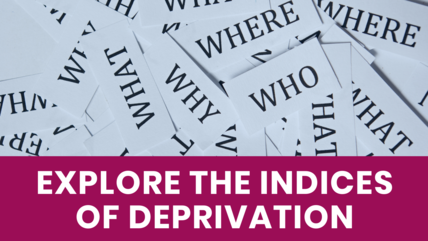Theory of Change: a rough guide to developing one for your small charity
Guest blogger Angela Schlenkhoff-Hus from Coalition for Efficiency explains Theory of Change, the steps to creating one and points to resources that can help. This is part of our Datawise London series.
Chances are if you are working in or with the voluntary sector you will have come across the term ‘theory of change’.
Maybe a funder has asked you to supply one with a funding application. Or maybe it has been on your to do list for some time, but you haven’t felt able to prioritise it or aren’t sure where to start or where to turn for guidance.
Maybe you are not entirely convinced that it is going be a useful tool. Or you have a theory of change, but it feels dated and too simplistic for the organisation that you have become or the problems you are addressing.
Whatever your situation may be, this blog will get you started. It will help you consider a ‘theory of change’ as a process that presents an opportunity, rather than a tick box exercise.
Developing a theory of change is a chance to bring the team together to discuss what really matters and understand where your organisation fits in the wider system. The process can help you to identify potential partnerships or collaborations, engage better with internal and external evidence, and improve how you communicate your impact internally and externally.
Ultimately, developing a theory of change is the groundwork for building a measurement framework and plan that will enable you to become a more effective and transparent learning organisation.
What is a theory of change?
A theory of change is a planning tool that can help you review and identify the difference your organisation makes. Your theory of change will be unique to your organisation and can be presented in various ways.
It is a visual description of the change you want to happen, and the steps involved to get there. It should be a collaborative process that includes multiple perspectives (e.g. staff at different levels, trustees, other volunteers, beneficiaries, partners, etc).
Steps to create a theory of change
The best way to start developing your theory of change, whether it is for the organisation as a whole or a specific project or programme, is by looking at the context you find yourself in:
- What problem are you trying to tackle?
- Who are you trying to reach?
- Where do you fit in?
Next, look at your ultimate goal:
- What does success look like?
- What is the long-term impact of your work?
Make sure this is something that you can actually influence, that it is specific and tangible and that it reflects what you are accountable for.
With your ultimate goal clarified you can then start identifying outcomes, i.e. the changes that need to happen for you to achieve your ultimate goal. The Outcomes Matrix developed by Big Society Capital is a useful tool to consult at this stage as it suggests outcomes by subject area for work with individuals or communities.
Your outcomes then help you identify and map your activities. What does your organisation need to deliver in order to bring about the desired changes?
Once the previous steps are completed you can then link them together, from your activities to your outcomes to your ultimate goal.
The final step is the visualisation and communication of this as a map which reflects your organisation or project/programme.
Now that you have your shiny new theory of change, don’t forget the most important part: reviewing it regularly to make sure it is still relevant and updating it when things change!
Types of theories of change
Theories of change come in different shapes and sizes, depending on the nature of your organisation and how much complexity you want to include.
Planning Triangle
The simplest depiction, and a great starting point, is the Planning Triangle developedby the NCVO Charity Evaluation Services. It is a simple tool that helps you connect the activities your organisation does with the difference they make.
Logic Model
A logic model goes into more detail, outlining the inputs (i.e. resources out into a project or organisation), processes (what you do), outputs (the services or products you provide), outcomes (how your users are affected by the services or products) and the impact (the long-term difference your services or products have on users).
Outcomes Map or Chain
An outcomes map or chain provides a more detailed representation of how different outcomes interrelate with each other to achieve the ultimate goal.
Systems Change
A theory of change can become even more complex when it follows a systems thinking approach. New Philanthropy Capital has written a report entitled ‘Thinking big: How to use theory of change for systems change’, a great resource for organisations wanting to explore this path.
An example of an advanced theory of change can be found on the Youth Investment Funds website. It shows that a lot of attention has been paid to the experience of users and to trying to understand their feelings and motivations when accessing services.
Further resources
For a more detailed explanation of how to build your theory of change and the different types of representation have a look at NPC’s practical guide ‘Creating your theory of change’ or their new guide 'Theory of change in ten steps'.
A toolkit for co-producing a theory of change is available at DIY Development Impact & You.
For examples of different representations as well as ideas for processes for developing a theory of change, have a look at Better Evaluation’s website.
Facilitation
Sometimes it is best to decide to bring in an external facilitator to guide you through the process, freeing up your headspace to focus on the content rather than having to worry about making sense of it all.
If this is your preferred option, get in touch with us at measuringthegood@cfefficiency.org.uk





